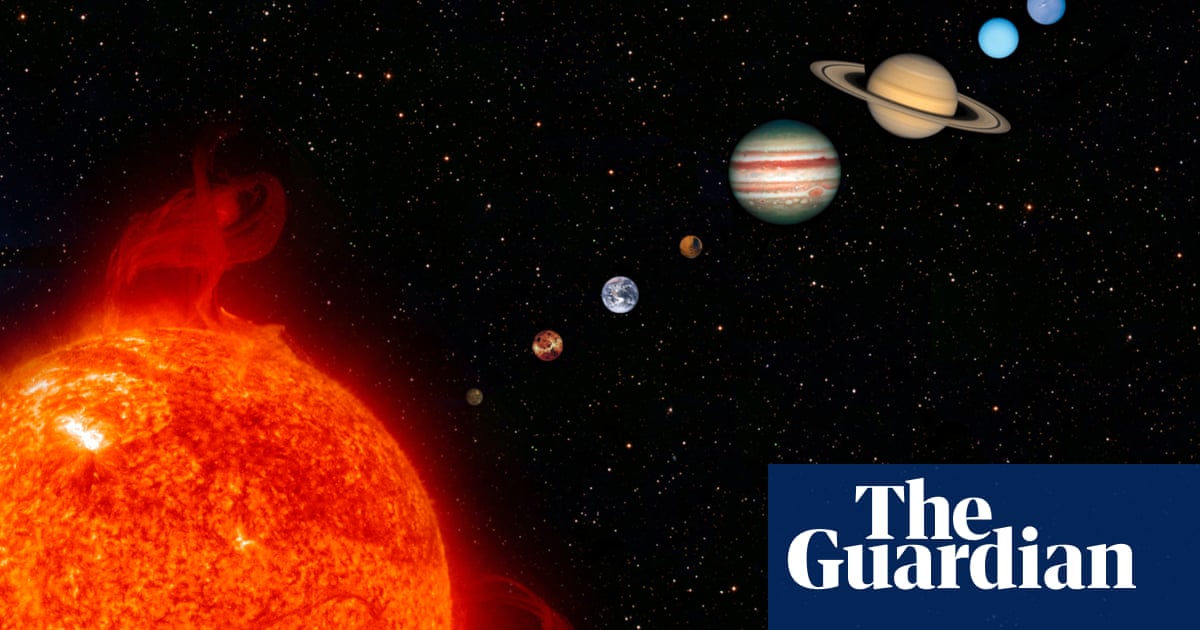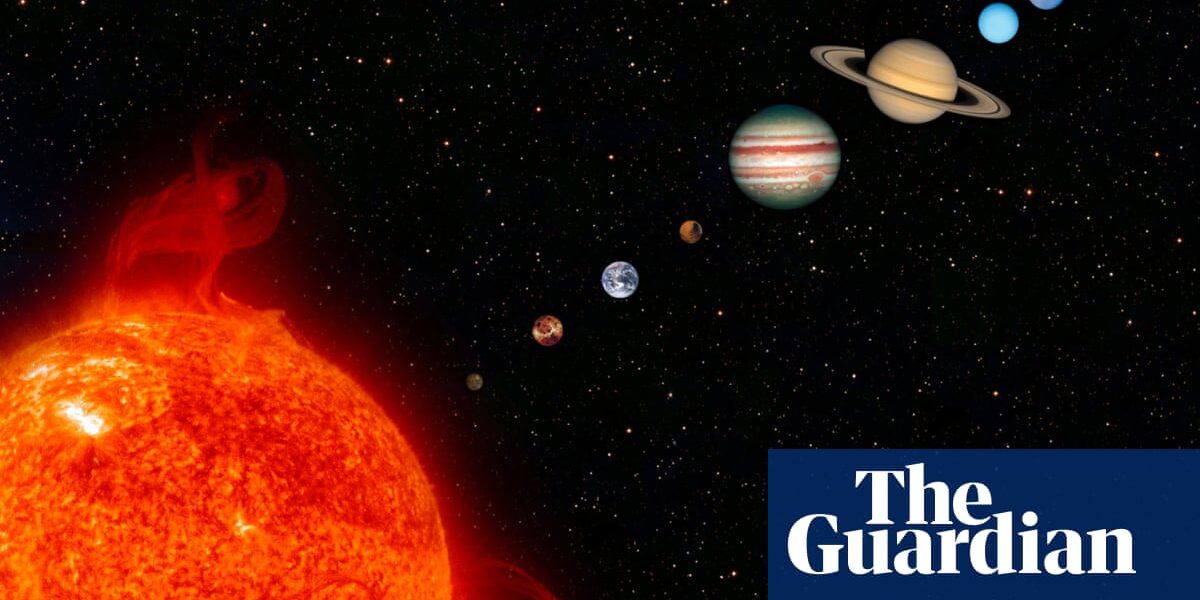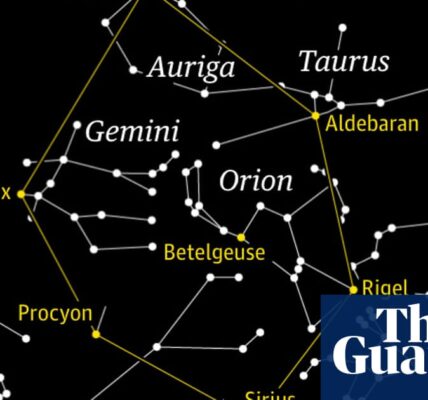
Stargazers are in with a chance of a celestial treat on Monday with six planets appearing in alignment.
Mercury, Mars, Jupiter, Saturn, Neptune and Uranus will take part in the parade – which occurs when planets gather on the same side of the sun.
Prof Danny Steeghs, of the University of Warwick said the event, which should be visible around the world, was due to occur around sunrise and would be rather low in the east, meaning the alignment would need some equipment to see properly.
“Uranus and Neptune will be faint, so viewers will require good binoculars to see them,” he said, adding that the proximity of Jupiter and Mercury to the sun would restrict their view.
Some of the planets may be visible to the naked eye, although scattered light might still cause difficulties. “Mars and Saturn are the more accessible ones to view, you can see them ahead of the other planets rising and a bit higher in the sky,” Steeghs said, adding that mobile apps could help show where and when to look up.
The planets will appear in a diagonal arrangement across the sky, with Saturn highest, followed by Neptune, then Mars, Uranus and Mercury. Jupiter will appear closest to the horizon.
Dr Grant Kennedy, also of the University of Warwick, said: “We see the sun in both hemispheres and the planets are not too far from the sun, so southerners have similar chances of seeing the planets.”
The parade is expected to last for several days, while the same planets will align – albeit in a different order – in August and in January 2025, with seven planets due to align in February next year.
“There will be quite a few similar events over the next few years because the outer planets move quite slowly and Earth moves quite fast,” said Kennedy. But he added: “If we were to wait for this specific configuration to go away and come back again, we will have to wait much longer.”
Indeed, while six planets are expected to align again in March 2080, that group includes Venus and not Neptune.
“Once Uranus and Neptune have moved on in their orbits and are no longer near each other on the sky, it would take around a hundred years until Uranus catches up to Neptune so they appear nearby on the sky again. And then we would have to wait for the other four outer planets to also be on the same side of the sun to see a parade,” Kennedy said.
Dr Ed Bloomer, an astronomer at the Royal Observatory Greenwich, warned planet-watchers not to look at the sun while searching for the planets, to prevent eye damage, and said for the best chance of glimpsing the parade they should head to a dark field or park and look to the east.
Bloomer added while he may take a look at the celestial event, it would be occurring very early in the morning. “I’m not going to lie,” he said. “I’m probably going to be asleep.”
Source: theguardian.com




